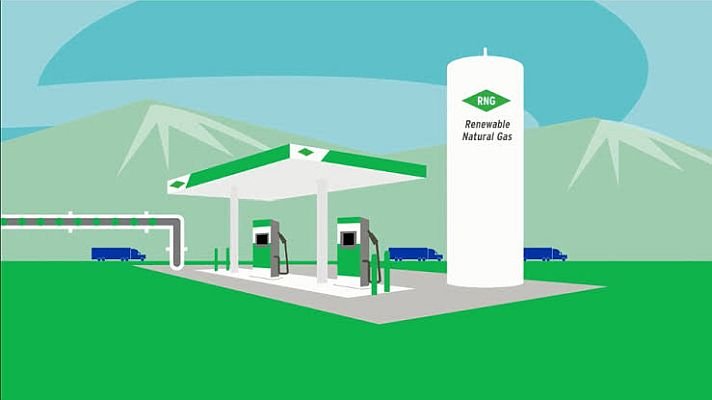Renewable natural gas (RNG) is a pipeline-quality gas that is fully interchangeable with conventional natural gas and thus can be used in natural gas vehicles.
RNG is essentially biogas (the gaseous product of the decomposition of organic matter) that has been processed to purity standards.
Like conventional natural gas, RNG can be used as a transportation fuel in the form of compressed natural gas (CNG) or liquefied natural gas (LNG).
Biogas is produced from various biomass sources through a biochemical process, such as anaerobic digestion, or through thermochemical means, such as gasification.
With minor cleanup, biogas can be used to generate electricity and heat. To fuel vehicles, biogas must be processed to a higher purity standard. This process is called conditioning or upgrading, and involves the removal of water, carbon dioxide, hydrogen sulfide, and other trace elements.
The resulting RNG, or biomethane, has a higher content of methane than raw biogas, which makes it comparable to conventional natural gas and thus a suitable energy source in applications that require pipeline-quality gas.
Not only does the use of RNG reduce greenhouse gas emissions, but it replaces the gasoline or diesel that would otherwise be used with a lower-emission fuel.
This doesn’t mean that we have the green light to keep wasting food or other organic material.
No, it means that there are innovative solutions being put forth that help offset some of the damage we have done, the vast contributions we have made toward the destruction of our own environment.
Reference- Clean Technica, EPA website,
